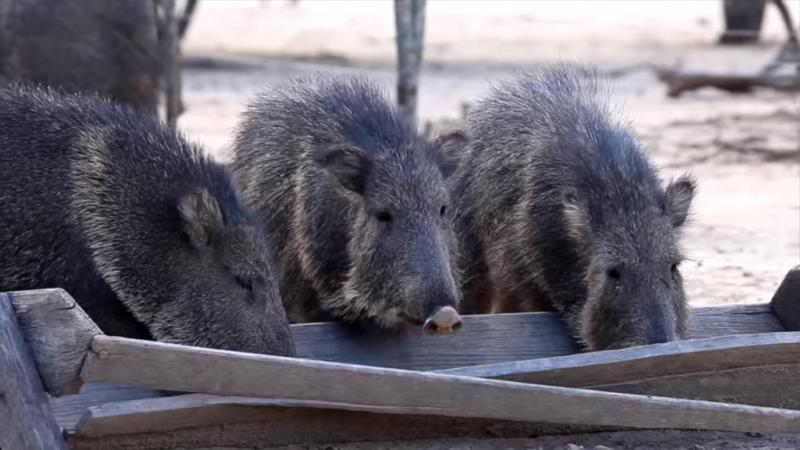Chacoan Peccary
Species Data
Class: Mammalia
Order: Artiodactyla
Family: Tayassuidae
Scientific Name: Catagonus wagneri
IUCN Red List status: Endangered
Description
Chacoan Peccaries or Tagua are locally known as ‘Tayazu’, although this can also be used to refer to wild pigs. They are larger, darker and have longer ears and tails than the more widespread and common White-lipped and Collared Peccaries. Chacoan Peccaries also have three hind toes, whereas other peccaries only have two. They have bristle-like fur, with a dark stripe running across their backs and white fur on their shoulders. Although the species was known from fossil records, it was thought to be extinct until the 1970s, when it was discovered in the Paraguayan Chaco.
Behaviour
Chacoan Peccaries eat cacti, bromeliad roots, and fruit, and have occasionally been known to prey on small mammals. Cleverly, the Chacoan Peccary uses its leathery snout to roll cacti on the ground to remove their spines, and can even pull spines off with its teeth. They also lick and eat mineral rich soil from naturally occurring salt licks and leaf-cutter ant mounds, to gain minerals such as calcium and magnesium.
They are territorial animals with home ranges which can be over 1000 ha. They maintain these territories using scent glands on their backs which they rub against objects. Chacoan Peccary herds are usually made up of between one and nine animals. They are most active around sunrise and throughout the day, but become inactive around dusk. They are sociable, and communicate through various sounds including grunting and chattering of the teeth.
Chacoan Peccaries give birth roughly once a year, with litter sizes of between one and four. It is estimated that individuals can live for up to nine years in the wild.


Habitat
Chacoan Peccaries are found in the dry Gran Chaco of western Paraguay, northern Argentina and south-eastern Bolivia, where temperatures are high and rainfall low. The habitat, xerophytic thorn forest, is characterised by a dense scrub layer, bromeliads, cacti and emergent trees.
Threats and Conservation
Chacoan Peccaries are found in the dry Gran Chaco of western Paraguay, northern Argentina and south-eastern Bolivia, where temperatures are high and rainfall low. The habitat, xerophytic thorn forest, is characterised by a dense scrub layer, bromeliads, cacti and emergent trees. Chacoan Peccaries give birth roughly once a year, with litter sizes of between one and four. It is estimated that individuals can live for up to nine years in the wild.
Populations of Chacoan Peccaries are in serious decline. Numbers are estimated to have shrunk by as much as 50% over three generations (1). This is due to the combined threats of habitat loss, mostly from land cleared to make way for soy bean agriculture and cattle ranching, and over-hunting. Peccaries are one of the most important sources of bush meat in the areas in which they are found. This is despite the fact that hunting the species within Paraguay is illegal. The danger from hunting is made worse by Chacoan Peccaries standing their ground when faced with a threat rather than running away (4).
The Chacoan Peccary has been classified as Endangered by the IUCN. It is also included within Annex I of CITES.
